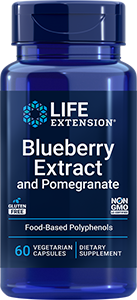 | November 2, 2010 | Higher vitamin D levels associated with lower risk of bladder cancer | | An article published online on October 26, 2010 in the journal Cancer Research reveals an association between higher levels of serum vitamin D and a lower risk of bladder cancer in men. The finding adds another cancer to the list of those for which vitamin D appears to have a protective benefit. The current study involved 500 participants in the Alpha-Tocopherol, Beta-Carotene Cancer Prevention Study, a randomized, double-blinded trial of Finnish male smokers conducted to determine the effects of alpha-tocopherol and beta-carotene supplementation on cancer risk. Participants were cancer-free at the beginning of the study. Blood samples drawn upon enrollment between 1985 and 1988 were analyzed for serum 25-hydroxyvitamin D levels and other factors. The National Cancer Institute researchers compared 250 subjects who were diagnosed with bladder cancer through April, 2005 with an equal number of participants who did not have the disease. Cases and controls were matched for age and date of blood draw. A low level of vitamin D was associated with a significantly greater risk of bladder cancer. Men whose vitamin D level was less than 25 nanomoles per liter experienced a 73 percent greater adjusted risk of the disease than those whose levels were at least 50 nanomoles per liter. Similar risks were observed for those whose levels fell between 25 and less than 37.5, and from 37.5 to less than 50 nanomoles per liter. "These findings are consistent with previous cell culture, in vivo, and genetic evidence suggesting that greater exposure to vitamin D could have a role in protecting against bladder cancer," Alison M. Mondul and coauthors write. "Higher serum 25-hydroxyvitamin D may be associated with greater urinary excretion and concentration of free and conjugated vitamin D metabolites. Increased exposure of the bladder mucosa to these metabolites could promote transitional cell differentiation and apoptosis and, thus, reduce epithelial proliferation and neoplasia." "Future studies should examine the association in other populations, especially nonsmokers and women, and evaluate possible effect modification by season of blood draw, physical activity, and intake of other nutrients, including vitamin E," they recommend. | |  |  | | Determining the best way of treating cancer remains highly controversial, even among mainstream oncologists. What may surprise the reader is the large number of documented therapies that have been overlooked by establishment medicine. Oncologists learn about new discoveries at scientific conferences, in medical journals, and on the Internet. Only a fraction of these doctors, however, translate this knowledge into enhanced treatments that would benefit their patients. In fact, many of the outstanding established medical advances are not utilized routinely by large numbers of physicians treating cancer patients. The fundamental message is to have your oncologist thoroughly assess the individual characteristics of your tumor, your blood system, and available treatments. Based on this evaluation, patients can interact with their oncologists to determine what therapies may work synergistically with standard conventional treatments. The objective of this multimodality approach is to attack tumor cells where they are most vulnerable. The primary determining factor in choosing the specific drugs is finding the various tumor cell and blood tests recommended in this protocol, along with historical statistical data that can help ascertain how your tumor will respond to specific therapies. | Life Extension Magazine® November, 2010 issue now online 
Departments: New interactive format available now! | |  | Blueberry Extract with Pomegranate Capsules   | | The wild blueberry extract contained in Blueberry Extract with Pomegranate provides more potent active ingredients than cultivated blueberries. Blueberry Extract with Pomegranate contains AuroraBlue® which is made from wild Alaskan blueberries that grow in a natural environment without exposure to any chemicals. This extract of wild fruits belonging to the genus Vaccinium is rich in antioxidants (anthocyanins and pterostilbene being the two most active) and possesses nearly 10 times the antioxidant capacity of cultivated berries. Blueberry Extract with Pomegranate contains potent doses of pomegranate extract. Pomegranate fruit contains polyphenols, tannins, and anthocyanins—all beneficial antioxidants. | | |   |  A staple beverage in many cultures for millennia, black tea contains theaflavins, beneficial flavonoids found naturally in its leaves. Advanced Lipid Control contains theaflavins, which scientists have discovered provide multiple benefits for arterial health. As well as supporting healthy cholesterol levels, theaflavins have been shown in human studies to protect against LDL oxidation and favorably affect endothelial function, thus helping to maintain a healthy circulation. The second ingredient in Advanced Lipid Control is called AmlaMax®, a patent-pending extract of Indian gooseberry. It contains a diverse blend of phenolic compounds that have been clinically shown to safely help maintain healthy levels of all three key blood lipids — LDL, high-density lipoprotein (HDL), and triglycerides — as well as markers of inflammation such as C-reactive protein. | | | |  | | Life Extension Update | | What's Hot | | Life Extension Magazine® | |

